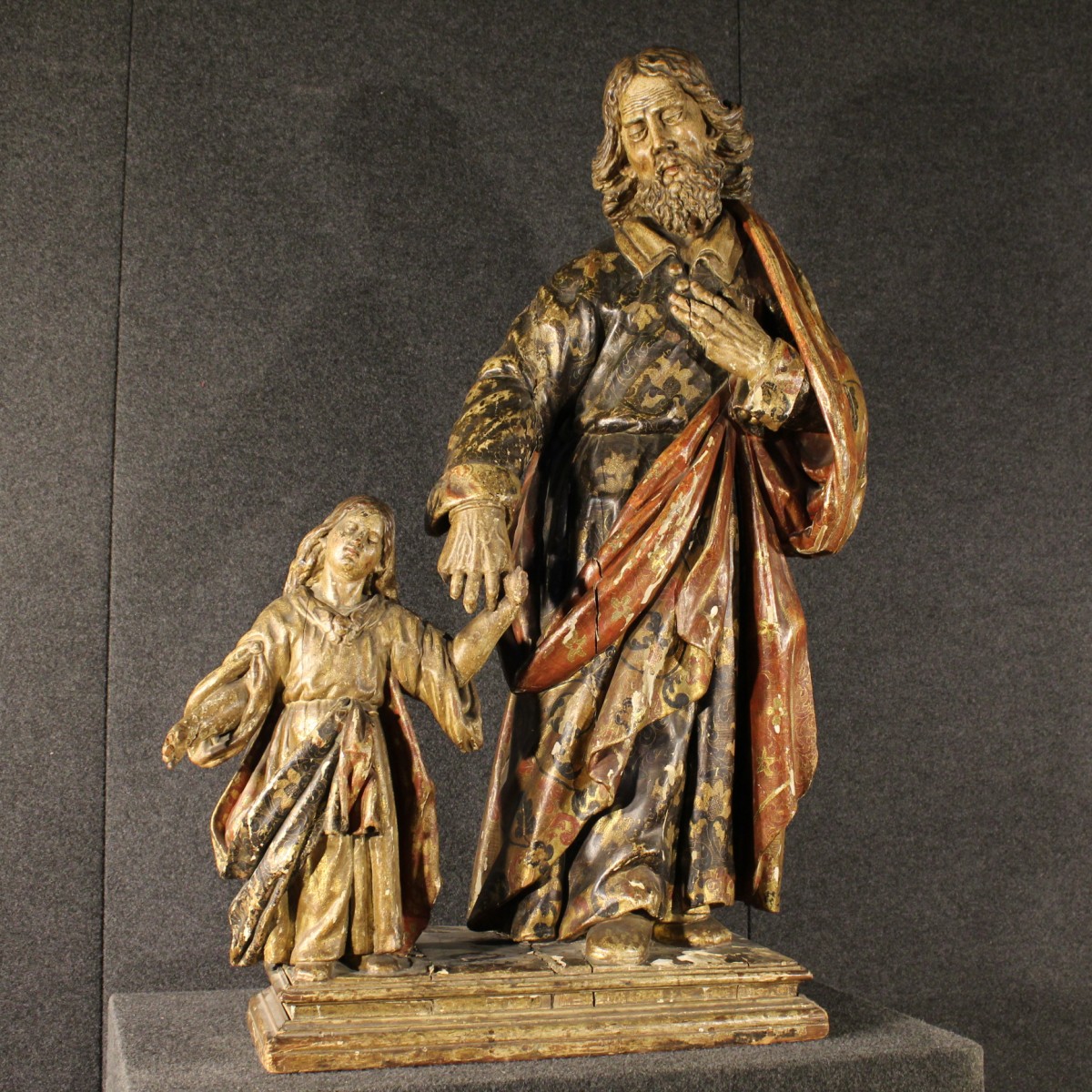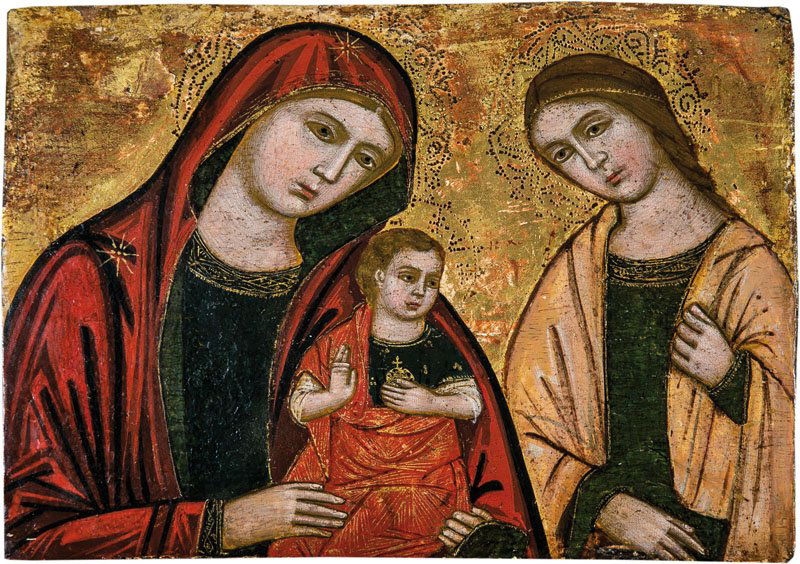
French sculpture
St. Joseph and Jesus, c. 18th century
Carved, lacquered and painted wood in patina
H 116 x L 84 x P 36

The Holy Virgin and child
polychrome decorated walnut
Northern France, 18thC
H 89,5 - W 54 cm
Gilded terracotta statue of Madonna with Child
26.00 x 6.00 x 5.00 inches*
Weight: 12.50 lbs*
Made in Spain w. Maker's Mark and stamp
Holy Virgin and Child
Ivory and Makassar ebony, partly polychrome decorated,
H 21,5 cm
Weight: ca. 400 g
An 18thC/19thC
Virgin and Child, 17thC
A polychrome decorated limewood Holy
H 91 cm
15th century AD.
A carved wooden architectural figure of a saint or dignitary in loose robes, with neat beard and styled hair, right hand clasped to the chest; later suspension loop to the reverse with old collector's paper inked label stating 'Mediaeval Figure / Ripon Cathedral / 15th century'. 1.1 kg, 35.5cm (14").
19th century AD.
Mary standing on a plinth, with flowing robes and infant Jesus held in her left hand
hollow to the underside
A bronze statuette
191 grams
12cm (4 3/4").
ARTIST OF THE TUSCAN XV CENTURY
Christ
SILVER
Size cm: 25 x 10
ARTIST OF THE CENTURY XVI
Cross Stilofila.
GOLDEN BRONZE
Size cm: 26 x 21
At the front of the crucified Christ with the four evangelists. At the direction of San Giovanni Battista with Tetramorph.
ITALIAN ARTIST OF THE CENTURY XVIII
Bas relief in bronze depicting Christ and the Samaritan woman at the well.
Bronze chiseled
Size cm: 34 x 60
5th-7th century AD. A sandstone tympanum with scene carved in high relief depicting the Adoration of the Magi; to the lower left, a column with rosette, part of a cradle or throne with three kneeling robed figures extending across the lower panel; above, a wheel or nimbus and arches or vaulted ceiling; above and to the right, an arch with inscriptions 'IVO(N)' and 'VIT' flanking a nimbate winged angel. 9.9 kg, 41cm (16 1/4").
The majority of Visigothic reliefs are religious in nature and mostly known from churches, cathedrals and funerary monuments. By the end of the sixth century the royal court was styling itself on Byzantine models, which included the depiction of the king as a Byzantine emperor and the decoration of churches in the Byzantine fashion. Plaques or slabs with this type of decoration have been found as part of friezes, chancels and altar tables. Visigothic art is distinctive in that although it was heavily influenced by Byzantine culture it retains its Germanic styles of form that depict images from nature, as well as the human figure, in a schematic fashion

Spain, late sixteenth-early seventeenth century
RILIEVO RAFFIGURANTE LA SACRA FAMIGLIA
A WOODEN, GILT AND CARVED RELIEF
carved wood, painted and gilded
67,5x51,5x11 cm.
7th-10th century AD. A bronze weight inlaid in silver with the bust of two saints with cross above and two Greek gamma letters beneath. 106 grams, 37mm (1 1/2"). Property of a London gentleman; acquired before 1970. Cf. Buckton, D. (ed), Byzantium: Treasures of Byzantine Art and Culture, London, 1994, pp. 86-87, for similar inlaid weights.
9th-11th century AD. A silver cruciform pendant with bilinear border, pierced lug; high-relief robed Corpus Christi to one face. 6.82 grams, 48mm (2").
North Africa, 6th-7th century AD. A pottery figure of the Virgin Mary wearing gown decorated with incised lines, veil with radiating lines along the edges; Christ child on her lap wearing necklace of incised dots; to the rear a round topped throne indicated by incised lines and dots. 98 grams, 95mm (3 3/4")
Acknowledgement: TimeLine Auctions, Capitolium Art Casa D'Aste,
Images are copyright of their respective owners, assignees or others






















